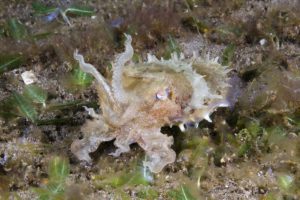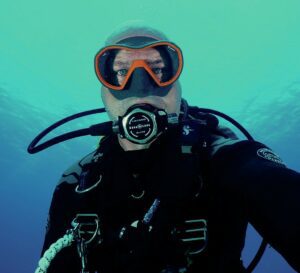Scuba Diver Editor-in-Chief Mark Evans provides a whistlestop tour of the Galapagos, one of the must-dive ‘bucket list' destinations on our watery planet.
Subscribe to the Scuba Diver YouTube Channel so you don't miss out on any future videos!
Hi Sccuba Diver fans, and welcome back. We are all longing to jump on an airplane and jet off to some tropical warm-water destinations, and more and more locations are opening up and travel restrictions are being relaxed, so today I am going to be giving you a whistlestop tour of the Galapagos, surely one of the most-famous ‘bucket list’ dive destinations on the planet.
The Galapagos Islands almost need no introduction – even new divers will have heard of the phenomenal diving opportunities that exist at this truly iconic destination. The Galapagos Archipelago is a group of 18 major islands, three smaller islands and some 107 islets and rocks that lie about 600 miles west of South America, and they are renowned for their large number of endemic species, many of which were studied by Charles Darwin during his second voyage of HMS Beagle.
The islands are volcanic in nature, and in June 2018, Sierra Negra, one of five volcanoes in Isabela, began erupting for the first time since 2005. The undoubted stars of the Galapagos are Darwin and Wolf, which lie to the north of the main collection of islands. At these remote outposts, you can expect to be sharing the water with schooling hammerheads, marble rays, Galapagos sharks, silky sharks, sea lions, barracuda, and occasionally whalesharks and even orca.
Another top dive site is Cabo Douglas off Fernandina Island, where you can dive with sea lions, Galapagos penguins, marine iguanas and flightless cormorants. As you can tell, diving off the Galapagos is characterised by encounters with the big stuff, so it is proper adrenaline diving. There are few places in the world where you can be buzzed by so many pelagic creatures – I have even heard people describe the never-ending wall of hammerhead sharks as a sort of ‘moving wallpaper’ behind the whalesharks and manta rays. Incredible.
On paper, the Galapagos is one of the more protected places on Earth. In 2016, Ecuador created a marine sanctuary in the area of Darwin and Wolf that includes 15,000 square miles as off-limits to all fishing to conserve the sharks that congregate there, and the ecosystem that supports them. Some 32 percent of the waters around the Galapagos Islands are now supposed to be protected from fishing, but they are still under threat from foreign fishing fleets which are targeting the pelagics living in their waters.
The Galapagos offers awesome diving all year round, but from June to November, when the water is cooler – between 60 to 75 degrees Fahrenheit – you can expect more whaleshark encounters, and from December to May, when you get warmer, clear water – between 70 to 86 degrees Fahrenheit – you will encounter larger schools of hammerhead sharks, manta rays and eagle rays.
It is always difficult to judge what exposure protection to wear in the Galapagos, as you can hit thermoclines and different temperatures as you move around to different dive sites, but a 5-7mm full suit is recommended. I’d suggest taking a 3mm hooded vest with you that you can use to layer up as and when you are diving in a colder spot.
Diving in the Galapagos can be extremely full-on, with strong currents to contend with, and choppy surface conditions. All diving is carried out from dive tenders. I’d say you want to be a reasonably experienced diver to get the most out of your time in this legendary location. We have teamed up with Aggressor Liveaboards for this series of short video tours around some of the world’s best diving destinations, and here in the Galapagos they have the Galapagos Aggressor III, which offers week-long charters running Thursday to Thursday that take in some of the best dive sites around this iconic location.
Expect four dives a dive – two in the morning and two in the afternoon – plus two night dives and two land excursions per week are on offer. The Galapagos Aggressor III is 100 feet long, and has eight staterooms for its 16 passengers. It has a large salon, spacious sun deck, shaded cocktail deck, bar, grill and hot tub. There is so much more to the Galapagos than we have shown here, but it gives you a taster for this fantastic diving destination.
Have you dived the Galapagos?
What were some of your most-memorable moments?
Leave your comments below, and if you have a question, fire away – if we can’t answer, maybe someone in our community will be able to. As always, stay safe – and if you are going diving, enjoy!








